Traveling on a budget can be a fun and exciting experience if you are prepared. You can have the time of your life while traveling cheaply.
It’s a common myth that travel can be expensive! But it doesn’t have to be. That’s why I’ve put together this extensive list of tips for traveling on a budget.
I’ve taken some amazing trips that have not cost a lot of money, and you can too!
So whether you’re looking to save money on airfare, hotels, or just general travel costs, here are a few tips to follow.
- Many people don’t realize that they can get cheap flights and accommodation by searching for deals online.
- Research the cost of various activities and attractions before planning your trip. Sometimes there are discounts available if you book in advance.
- Be mindful of your spending habits on each individual trip – one expensive meal out can quickly add up when traveling for while.
Compensated links are contained in this post. If you purchase through these links, I earn a small commission, at no additional cost to you! Please read my disclaimer for more info.
Table of Contents
How much money should I save before traveling?
Knowing what to budget for a trip can be difficult unless you put some time into planning. If you are the type of person that just wings it, you’ll likely end up spending more and seeing less.
This is important to me as I try and pack as much as possible into every trip. I do this as I never know if I’ll ever get the chance to return, so I try to make the most out of my visit.
There is no set amount for how much you should try to have saved up because it’s going to depend on your destination. For instance, Southeast Asia is relatively cheap to travel around, but Australia isn’t. Central America or South America may be cheaper than North America.
How much money should you have when traveling will always be location-dependent.
But what you do need is a bit of a buffer. So work out what you think you may need and then try to add an additional 20-30% on top. You just never know when an unexpected expense may arise, and it’s better to be prepared.
Tips to traveling on a budget
I’ve asked travelers from around the world to contribute their best tips on how to travel on a budget.
The responses have been grouped into rough themes. Hopefully, this helps you to think about each key theme and relate it to your next holiday.
How to save money before traveling?
This is the hard part for travelers. You want to go somewhere but you just have to save a bit of money. It’s so easy to say spend less money, but it’s much easier said than done!
The next couple of tips might help you before you’ve even booked your first flight!
Open a travel savings account
Opening a savings account that is dedicated to travel is a great idea. Why open a travel savings account instead of just using your regular checking or savings account?
Because when you have a specific goal in mind (like saving for a trip), it’s easier to stay motivated. Plus, many banks offer higher interest rates on travel savings accounts than on regular savings or checking accounts.
Depending on your situation, you can have a part of your salary directly disbursed to your savings account so you won’t even see it go missing. And what you don’t see, you can’t miss.
If your workplace doesn’t have this feature, you could also set up a regular transfer between your main account and your savings account.
The advantage of this is that when you see a fantastic travel deal you can book it straight away because you’ve already saved up some money.
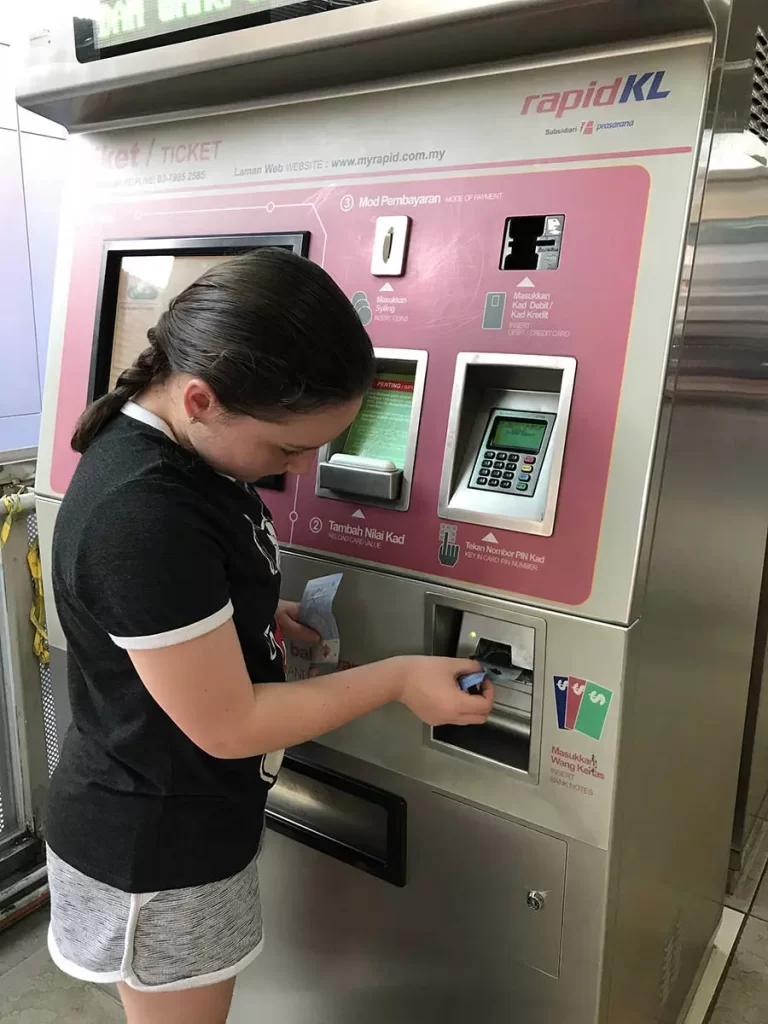
Reduce impulse buying
Contributed by Mary from Be Right Back
One way to afford the type of travels you dream of is to prepare for your trip by budgeting and saving money ahead of the trip. One of the most efficient ways to save hundreds of dollars fast is by reducing impulse buying. Impulse buying is the act of buying any types of goods or services that were neither wanted nor needed, on a whim.
There are different causes of impulse buying but the main one is the need for immediate gratification. Other causes include a need to feel in control or a need to fit in, especially when the shopping session is undertaken with friends.
In a world where consumption is at the heart of everything, from television shows to social media, it is really easy to feel like spontaneously buying an object or a service will make you happy. Unfortunately, the reality is that it will eat up your savings fast, while the initial joyful feelings evaporate and are replaced by the unresolved feelings that caused the impulse in the first place.
There are lots of ways to stop impulse buying and increase your savings. Depending on their usual spending, people have saved thousands of dollars in just a couple of months by addressing their impulse buying habits.
The next time you find yourself adding to cart, ask if this purchase will get you closer to your travel dreams.

Travel credit cards
Contributed by Jessica from The Uprooted Traveler
One of the best ways to travel on a budget is to research and sign up for a travel credit card. A travel card like the Chase Sapphire Preferred or the Capital One Venture, can earn travel points on everyday purchases and use them on everything from plane tickets to Maui to an over-the-water bungalow in the Maldives.
Depending on the card, you may qualify for bonus points if you hit a certain spend threshold in the first few months of having the card, so if you can time your sign-up with a more expensive life event, like getting married or moving, you’ll be able to leverage those expenses into helping you pay for future adventures.
Additionally, cards often come with other types of perks that can save you money in the long run, like airport lounges, free international transactions and Global Entry applications, and discounts on services like Lyft.
Obviously, be sure to pay your off credit card every month to make sure this benefit is working for you, instead of working for the credit card company!
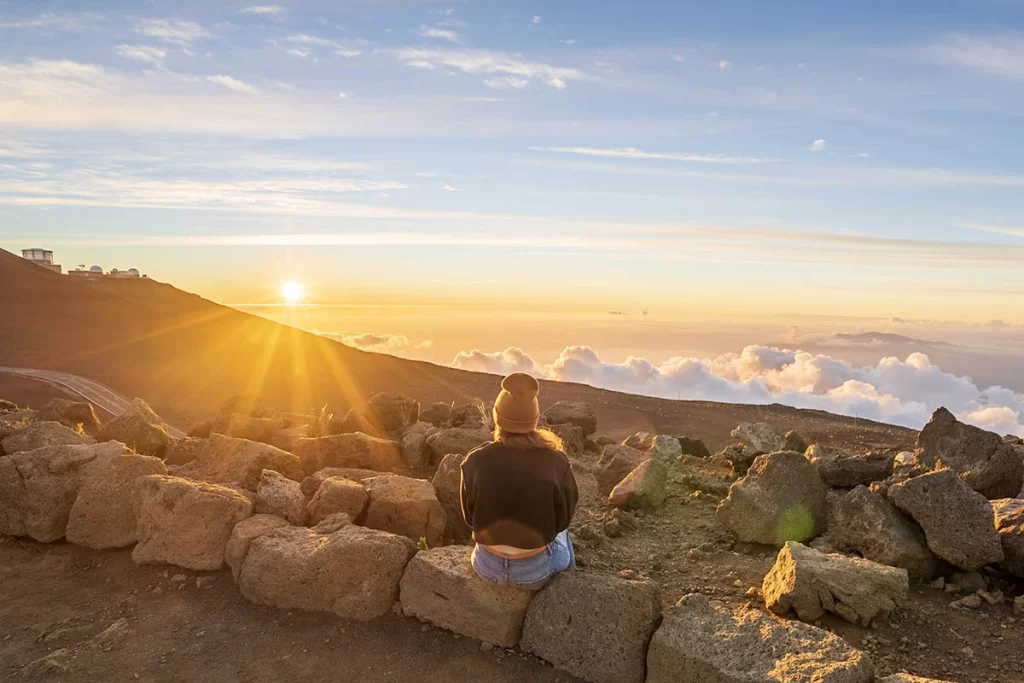
Student and youth discounts
Contributed by Natali from She’s Abroad Again
Did you know that you can get better deals just by being a student? Yes, many sightseeing attractions, transportation providers and cultural establishments offer significant student and youth discounts.
Therefore, if you are a student, do not forget to bring your student ID on your next trip!
If you plan to visit museums, theatres and other sightseeing attractions worldwide, you know that entry fees are steep and quickly add up! At the same time, those attractions want students and young people to visit and learn more about the culture of the place they are visiting. That is why they often offer considerable discounts for students and youth generally.
You will see student and youth prices indicated alongside regular ticket prices. Sometimes you will even get a free entry! For example, if you are an EU citizen under 26, you will have free entrance to most Parisian museums, including the Louvre!
Even if the discounted price is not clearly displayed, it does not mean that there is no discount. Do not be embarrassed to ask if there is a student or youth discount, for yourself or your kids!
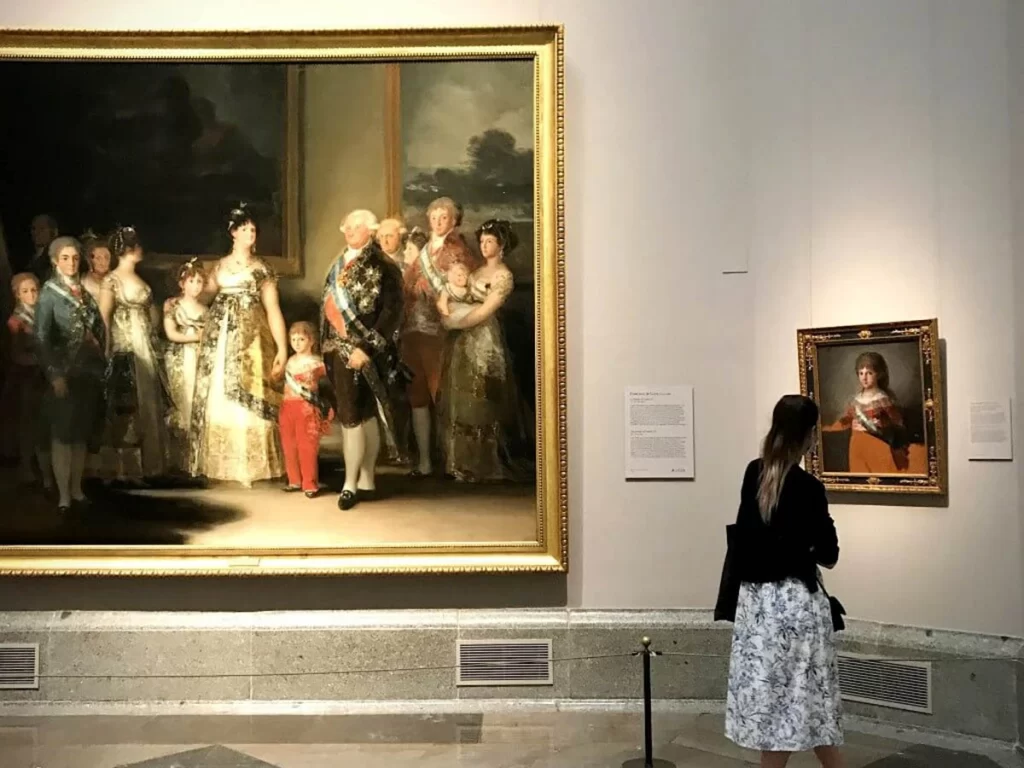
Where should I travel for cheap?
There are many great places to travel where the cost is relatively low. Eastern Europe, for example, has many interesting and affordable destinations, such as Prague and Budapest.
Southeast Asia is also a great option, with countries like Thailand and Vietnam offering much to see and do for a fraction of the cost of Western Europe or North America.
If you’re looking for an exotic beach destination, consider heading to Central America instead of the Caribbean – you’ll get more bang for your buck.
If you need tips for maintaining a budget while traveling, keep reading!
Find the cheapest flights
There are a few travel hacks you can implement to get cheap flights and this is one of my favourite tips for flying cheap. Google Flights and sites like Skyscanner and Cheap-O-Air have the ability to give you fantastic information at a glance about where the cheapest flights are.
If you are prepared to accept whatever location and whatever travel dates, you can pick up a great deal on flights. The best flight I have bought was from Sydney, Australia to Xi’an, China via Shanghai for $318 return on a full-service airline.
On Google Flights you can adjust different filters to find the cheapest prices. You can choose a weekend, one week or two weeks as the travel length. The map will show you all the cheapest routes.
On Skyscanner, simply choose ‘Everywhere’ for your destination and ‘cheapest month’ for when you want to go. On Cheap-O-Air it has the default set to Anywhere, so just start searching!
The idea behind this as a travel tip is that you need to be flexible to save money. If you only want to go to Italy in the summer, you will find yourself paying for expensive flights.
If you have a tight budget and you just want to go on a trip anywhere to experience a new city or a new culture, then you can easily find a cheap ticket using this method.
Another idea is to set price alerts on flights. Some websites allow you to choose a destination that you would like to watch for movements in price.
My only advice when using these sites is to book through a reputable site. I usually find the deal this way, but then book through the airline itself. Sometimes, you may have to pay a little bit more, but it makes me feel more comfortable in case I need help.
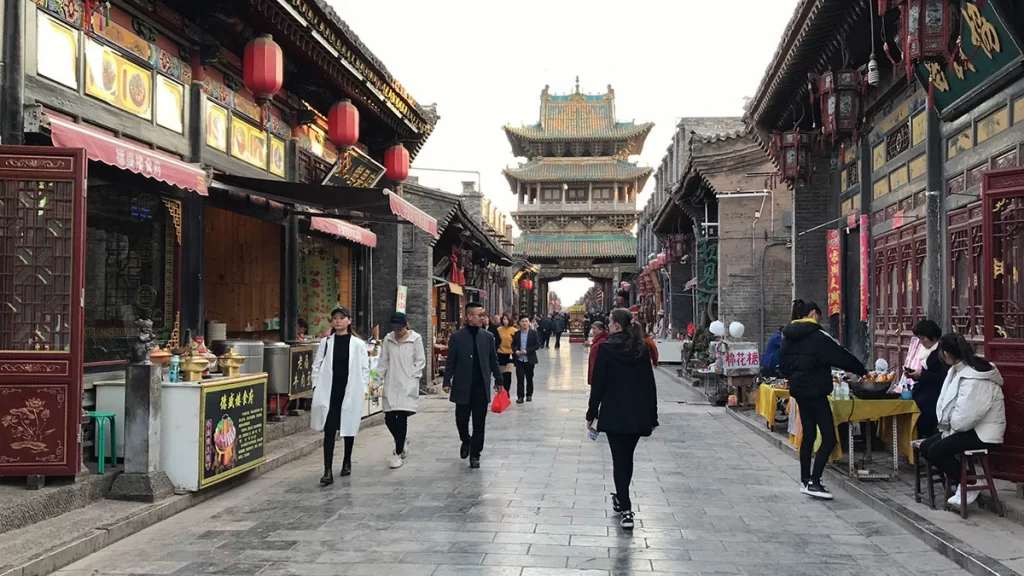
To find some of the cheapest flights from your location, check out Cheap-O-Air’s website below.
Add a layover
Flights will always be the cheapest if you are heading to a major city. If you want to go elsewhere, it may be cheaper to add the second leg as a separate flight.
For instance, if you want to travel to Hanoi in Vietnam, most flights to Ho Chi Min City will be cheaper.
Book your flight to HCMC and allow yourself a day or two to soak up the sights and atmosphere of the city. Then, have your next flight booked as a separate internal flight to Hanoi, the capital city of Vietnam.
Doing this means you get to experience more of the country or location you are in.
However, you do need to be mindful of the balance between where you are having a layover and where you really want to be.
If you only have a limited number of days, it may be best to book all the way through on one ticket. But if you have time, you will be able to save money by booking different tickets.
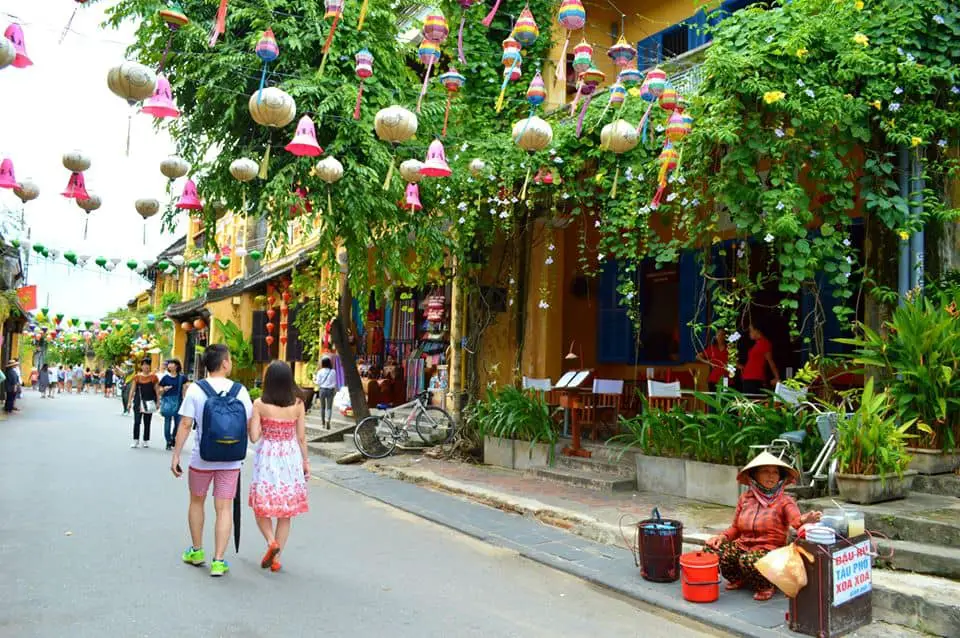
Set a daily budget and track expenses
Contributed by Rachel from Adventure and Sunshine
Despite best intentions, it can often be difficult to keep track of your daily spending and know whether you are keeping to a budget when you travel. No one wants to end their trip early or go home with a mountain of unplanned debt.
So, one of the best ways to travel on a budget and make sure you have enough money for your entire trip is to set a daily budget and track your expenses each day.
When traveling through a series of countries, it is a good idea to set a different daily budget based on the average costs for each country. Setting and tracking a travel budget is very easy to do with mobile apps like Trabee Pocket and Trail Wallet.
But the most important thing is to enter your expenses throughout the day and review your spending every few days.
If you have spent more than your budget, plan for a cheap day or two to make up for the overspend. Have a bit extra to spend? Splurge on a special activity or meal knowing you are still on budget.
Whether you are traveling for a week, a month or taking a gap year, setting a daily budget and tracking your expenses is the very best way to travel successfully on a budget.
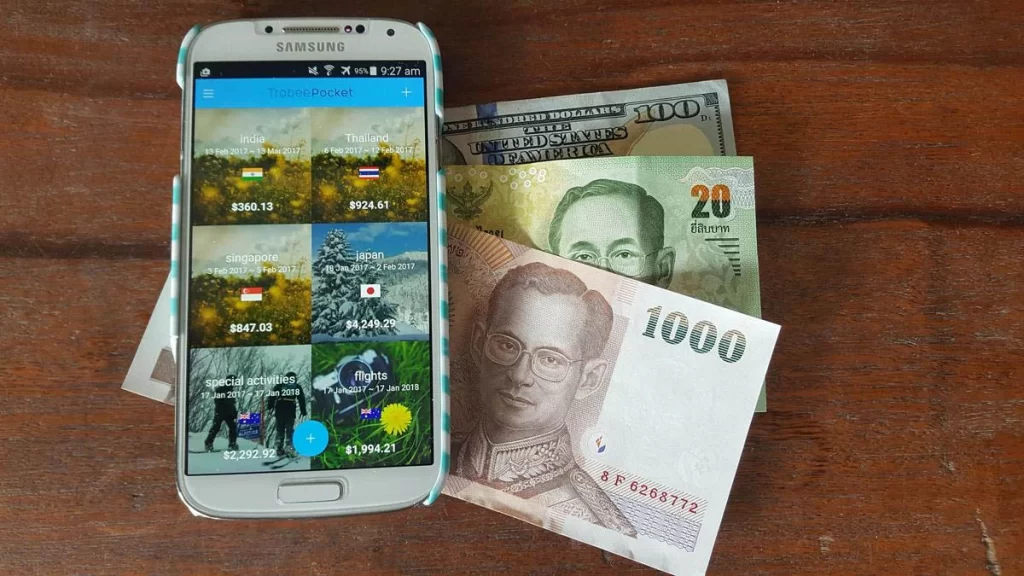
Low international fee card
One way to save money while traveling is to reduce the administrative costs of traveling. I’m sorry to say, but it’s time to do some more research.
Check out the banks in your area and have a look at the fees they charge for international transactions. I have an account through ING that provides a refund on all international transaction fees.
The fee refund was especially useful when traveling to Argentina as it is well documented that the ATM fees are astronomical. By using my debit card to withdraw cash from an ATM, I was able to save so much money.
Not all banks offer this kind of service, but if you can find one that does, it will definitely make traveling much cheaper!
Organise an eSIM
Contributed by Sydney from A World In Reach
One of the easiest ways to save money while traveling internationally is by skipping an expensive international phone plan and choosing an eSIM instead.
eSIMs, or embedded SIMs, are digital SIM cards that you can install on your phone to activate a cellular plan. With eSIMs, you can install a new, international-compatible SIM without removing your usual SIM card from its slot. Once it is installed, you’ll be able to access the internet via a cellular data connection through a local service provider.
There are a few different eSIM marketplaces, but Airalo is one of the best and easiest to use. With Airalo, you can choose a country-specific plan or a regional eSIM that gives you data in several countries within a region. There’s also a Global eSIM if you’re planning a round-the-world trip.
Once Airalo is installed, simply double check to ensure your device is compatible, choose the right eSIM for your destination and the length of your trip, and then follow the instructions to install the eSIM.
After the eSIM is installed, you’ll be able to access the internet so that you can easily use your phone as a GPS, search for restaurant recommendations, and keep up with social media – all without having to rely on WiFI or pay big bucks for an international mobile plan through your home carrier.

Top tips when booking your trip
When you’re booking your trip, this is the time when you can save the most money. But you do need to put in a little bit of effort to find the best deals at cheaper prices.
The internet is your friend here. There are so many ways to save money on trips and they usually begin with a good search engine.
Travel outside of peak times
Contributed by Holly from Four Around The World
One of the best ways to save money on travel, especially if travelling with kids, is to travel during the shoulder seasons. This means travelling right before or after the main high season.
In most cases, the peak season is during summer, however, depending on your destination, this might not be the case. This means you will need to do your research before you go to find the best time to get a good deal.
For example, anywhere that is popular for skiing and winter activities will be equally expensive (if not more so) during the winter months when it is snow season. The same goes if visiting a destination that is popular for their animal migrations or breeding seasons if could they fall during what would typically be a shoulder season in spring or autumn.
Not only will travelling during the off-peak months save you money, but you will also avoid the crowds. Less time spent waiting in lines at popular attractions! This can make for a much more pleasant and relaxed experience, especially if you are travelling with young children.
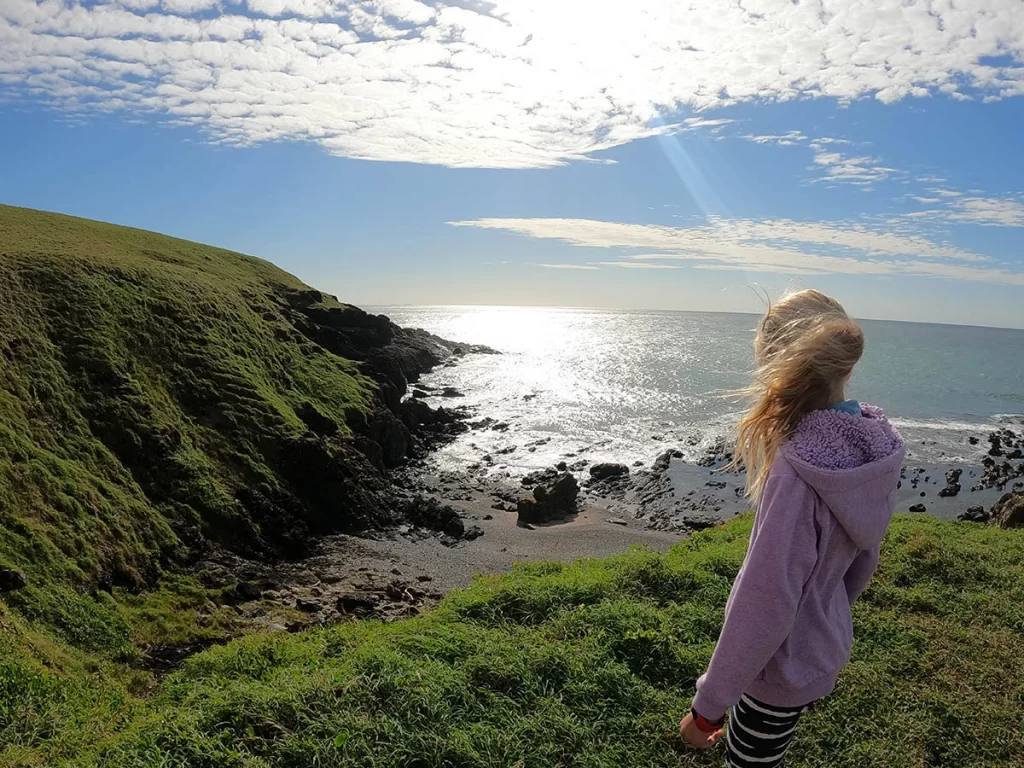
Family travel during the school year
Contributed by Brodi from Our Offbeat Life
A great way for families to save money on travel is to go on vacation during the school year. Don’t limit trips to school break periods. By doing this, you can save money on both airfares and hotels.
For example, flying to Florida over Christmas break could cost $600 per person. That same route with the same airline might cost less than $200 per person at the beginning of February.
In addition, there are generally fewer crowds in popular destinations. This can also help save money on food when restaurants offer dining specials to attract customers. Tour operators often offer similar deals to people traveling during the low season.
Despite being away from school for vacation, this does not mean that kids aren’t learning. Often, they will absorb more knowledge from all the new things they experience on vacation than they would have by doing worksheets at school.

Travel with carry-on luggage only
Submitted by Sasha from Mog and Dog Travels
Travelling with carry-on luggage only and avoiding hefty airline checked luggage fees is a great way for frugal travellers to save money when they are on the road.
In a post-Covid world, many low-cost airlines and even some national carriers have started to try and recoup money lost over the last two years by charging for everything: from blankets and headphones to inflight meals and entertainment.
However, checked luggage fees are where budget-conscious travellers can really get hit in their wallets – these fees can range from $15 per bag to a whopping $50 on some airlines!
The answer to this problem is to just travel with carry-on luggage only! Most airlines include a cabin bag (that fits into the overhead lockers) in your free allowance, plus a handbag or laptop bag that fits under your seat.
Different airlines have different cabin bag policies and you should check these before travelling: for example, British Airways specifies the dimensions that your carry-on bag should be but has no weight limit, whilst airlines like Air Asia and Turkish Airlines specify that your bag cannot weigh more than 7kg or 8kg.
Travelling with just hand luggage also helps you save money in other ways. If you aren’t lugging around huge suitcases, you can easily take public transport to and from the airport and even between different destinations, saving you money on expensive taxis or hiring a car.
It’s also less stressful: with a small carry-on bag that stays with you, you don’t have to worry about check-in queues at the airport or an airline losing your luggage!
Whilst travelling with carry-on only requires some preparation and planning, the cost savings and reduced travel stress are well worth it.
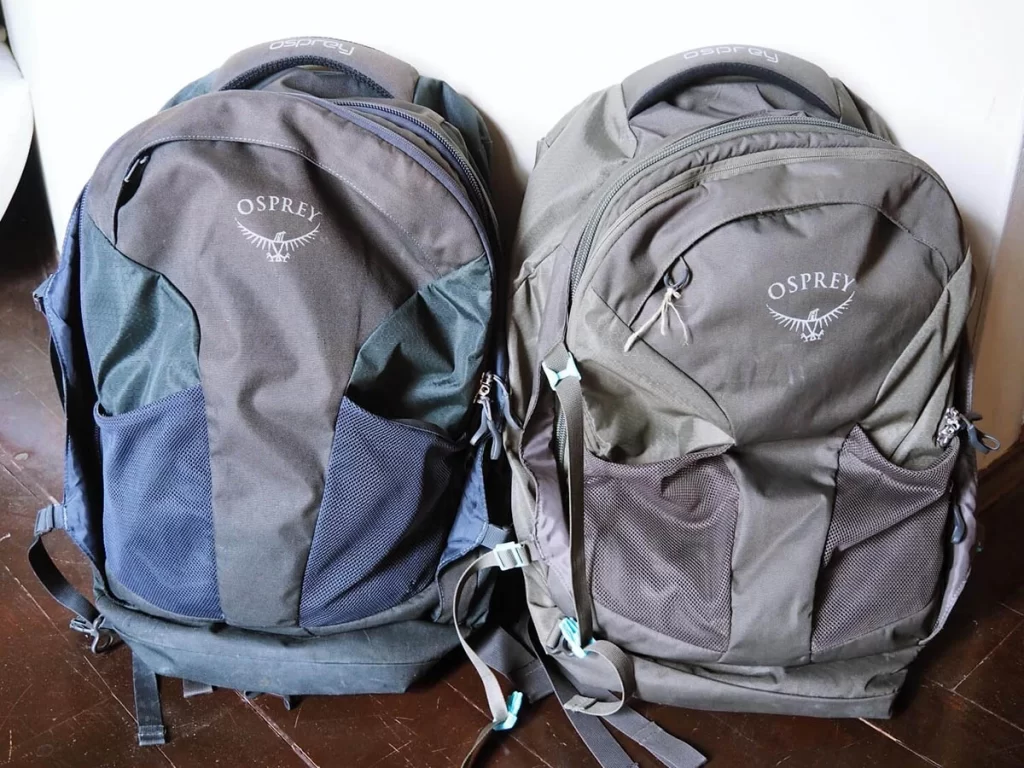
Osprey Travel Backpack
This is the perfect bag for all your carry-on needs! It has convenient compression straps which help to reduce the bulk of your bag so it fits easily in the overhead compartment. It readily converts to a duffel bag if that’s your preference too. A great lightweight bag for your next travel adventure.
Book using cashback sites
Contributed by Emma from Mum’s Money
Cashback sites like Rakuten, Ibotta, and TopCashback are a great way for budget-conscious travelers to save money on their travel bookings.
When you use a cashback site, you earn cashback on your purchase from the retailer. For example, if you book a hotel room through a cashback site, you may earn up to 10% cashback on your total booking.
This cashback can be used to offset the cost of your travel or even save up for a future trip.
It’s important to note that cashback isn’t usually paid until after your stay is complete so there is a time delay in receiving your funds, but legitimate cashback sites like the ones listed here definitely pay.
In addition, cashback sites often have special offers and deals that can save you even more money. For example, you may be able to find a discount code to use at checkout or earn additional cashback by booking your travel during certain periods.
How it works is that cashback sites work with retailers to create exclusive deals for their members. When you purchase through a cashback site, the retailer pays a commission to the site.
The cashback site then passes a portion of that commission back to you, the shopper. This commission is how cashback sites make their money.
By passing on some of the commission they earn, cashback sites can provide significant savings to their members.
By using cashback sites, you can easily save hundreds of dollars on your travel bookings each year.
Recommended sites for each country are below:
- Australia: Cashrewards, Shopback, Honey
- United Kingdom: Quidco, Top Cashback
- United States: Rakuten, Ibotta

Use apps to find the best deals
Contributed by Karlie from Bali Buddies
We are living in a digital world, and using apps specific to the area you are visiting can save you not only money but time as well.
Before your next trip, spend a little time researching the apps used by locals and expats in the area you are visiting.
There are many localised apps that give the best prices for transportation, food, tickets, hotel bookings and more! For example, when you are visiting Asia you should definitely download the Grab Superapp before your trip. This app allows you to book transport (cars, motorcycles & tuk-tuks) at set prices. No more haggling on the street in Asia and wondering if you are paying too much!
Downloading a VPN app is another hack that can help you access things more cheaply. Turn your VPN on to the country you are visiting before booking flights, accommodation, tours and tickets. Often when you’ll find prices to be cheaper than searching and booking from abroad.
More and more apps are being developed every day. Different apps take off in different regions, and it’s worth knowing about them before your trip!

Look for last minute deals
You can often get a great last-minute deal on accommodation and activities if you are prepared to wait to book.
The last-minute method can be risky, but it can also pay off. Airlines and other sectors of the travel industry have dynamic pricing. This means that the prices will move in line with demand.
Flights are generally cheaper when you book them in advance because the airlines want to start filling up the flight. Once it gets a bit fuller, the price will increase because they want to start reducing the number of people on that flight. The cost will skyrocket a few days before the flight because they know business people don’t care how much a flight is because the company is usually paying for it.
However, other activities like making a booking on a cruise ship can get cheaper because the demand tends to fall the closer to the ship departing. Cruise operators want as many people booked as possible.
For instance, you can pick up a last-minute cruise to Antarctica from Ushuaia for thousands less. The best way to get a good price on a trip is to search around every now and then and see what great deals you can find. Although, sometimes you just have to be in the right place!
So, do your bank account a favor and look for last-minute travel deals.

Accommodation tips
One of the biggest expenses on a trip is accommodation. Luckily, there is a broad spectrum of options available to choose from.
Once I have a rough idea about the tourist attractions I want to visit, I will make a decision on the best location to start my accommodation search.
Below you will find some useful tips to travel on a budget by reducing accommodation costs.
Stay somewhere with good transport connections
Contributed by Caroline from Veggie Wayfarer
The biggest expense when traveling, aside from flights, is usually the accommodation. There are a few options to bring down the costs, Couchsurfing (free) or choosing a low-budget hostel to spend the night. However, for those travelers who want a comfortable night’s sleep and do not have to share a bathroom, there is a third option.
The budget-conscious traveler can spend some time thoroughly researching the place they want to visit and book an accommodation slightly away from the center for a fraction of the price.
For example, travelers looking into where to stay in Brussels will find that accommodations around the main square easily cost upwards of €150 a night for a 3-star hotel without breakfast. While €150 a night in the area of Uccle will get you an upscale B&B, with a sumptuous breakfast.
The trick, check if your location is well connected via public transportation to all the main sights you want to visit.
Granted, it is great to wake up right next to a historical monument but if that historical monument is a mere 15 minutes away on public transport to a cheaper and more comfortable hotel it might be worth the tradeoff.

Book a stay in a hostel
Contributed by Sarah Carter from Cornwall’s Best
Accommodation tends to be one of the bigger elements of your spending when traveling independently.
Hotels are expensive, and renting apartments can be massively costly when booking accommodation. Even cheap hotels can add up when traveling.
In some countries camping can be cheaper, in others – like New Zealand – it’s often not that much cheaper than a room somewhere, especially when you factor in the need to carry all your own camping gear!
For a long time, the cheaper accommodation choice of the budget traveler has been the hostel. And if you think that this means a grotty dorm bed in a grotty room then it’s time, in 2022 to change your views of hostels.
There are some amazing hostels available today. Hostels today contain lots of private rooms, and some have private bathrooms. Others have quirky accommodation choices too. And because they still bring shared spaces like kitchens, lounges, gardens, and yes shared bathrooms, they’re a great way to travel on a budget.
The hostel in Penzance, Cornwall, for instance, is one of the best places to stay in Penzance – with a variety of sleeping options. The hostel is set in a Georgian mansion and has private rooms, shared dorm rooms, glamping and camping options – and in a part of the country that is renowned for expensive accommodation, it’s perfect for saving money while you travel.
Booking cheap places like hostels means you’ve got more money to spend on activities and sightseeing. And if you can get a free breakfast, that’s an added bonus!
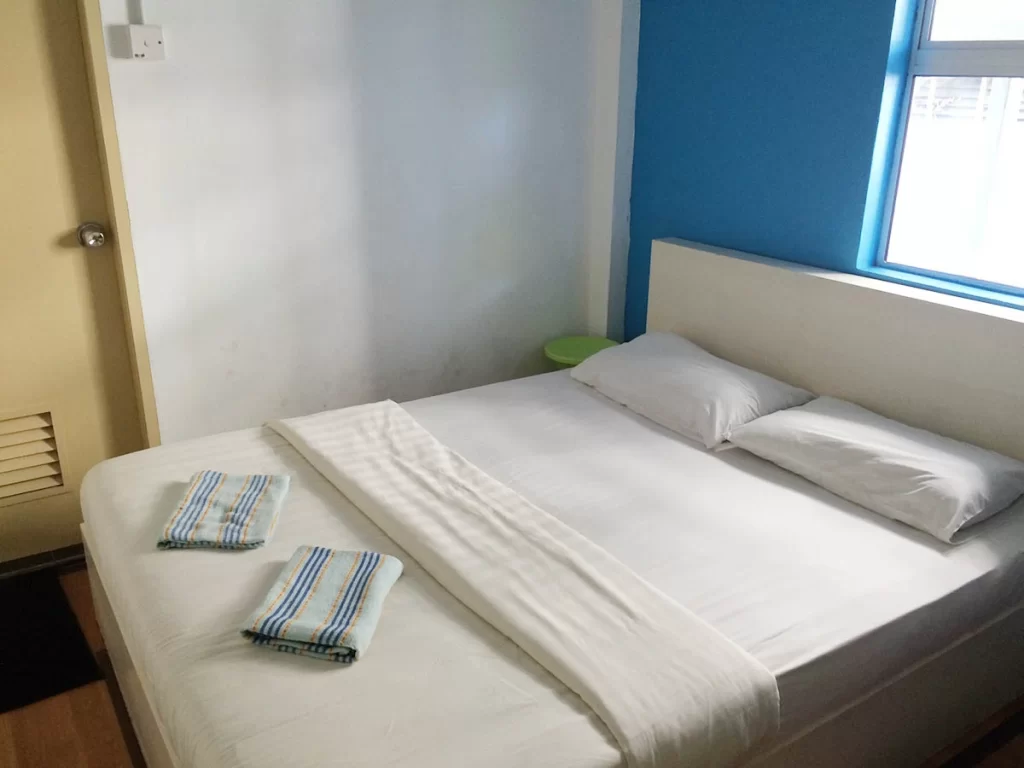
Search for the perfect hostel for your next trip below!
Discover couchsurfing
Contributed by Danni from Danni In The Desert
The concept behind couch surfing is building a global travel community by allowing people to exchange their available free space to other travellers. Built on this altruistic concept, it can save one of the largest travel costs of accommodation.
Is it only couches? No! You’ll find spare bedrooms and even guest houses if you’re lucky! I’ve stayed in a luxury apartment in Dubai with other couch surfers, a spare bedroom in a 400-year-old farmhouse in Italy and of course a few couches too. Most have had really cool experiences that went with them too.
You’ll need to sign up to Couchsurfing.com and create an account. You can also use female-related travel groups, such as Girls Love Travel, where they have sub-groups for women willing to host other women. Couchsurfing.com people have reviews, so make sure to read everything and click through the profiles leaving a review. It’s best to go for members who have several reviews and that have been active for longer.
Couch surfing isn’t just staying somewhere for free, it’s also a community. Meeting locals and learning about where you’re travelling in a unique way. Regular events are also part of the couch surfing community.
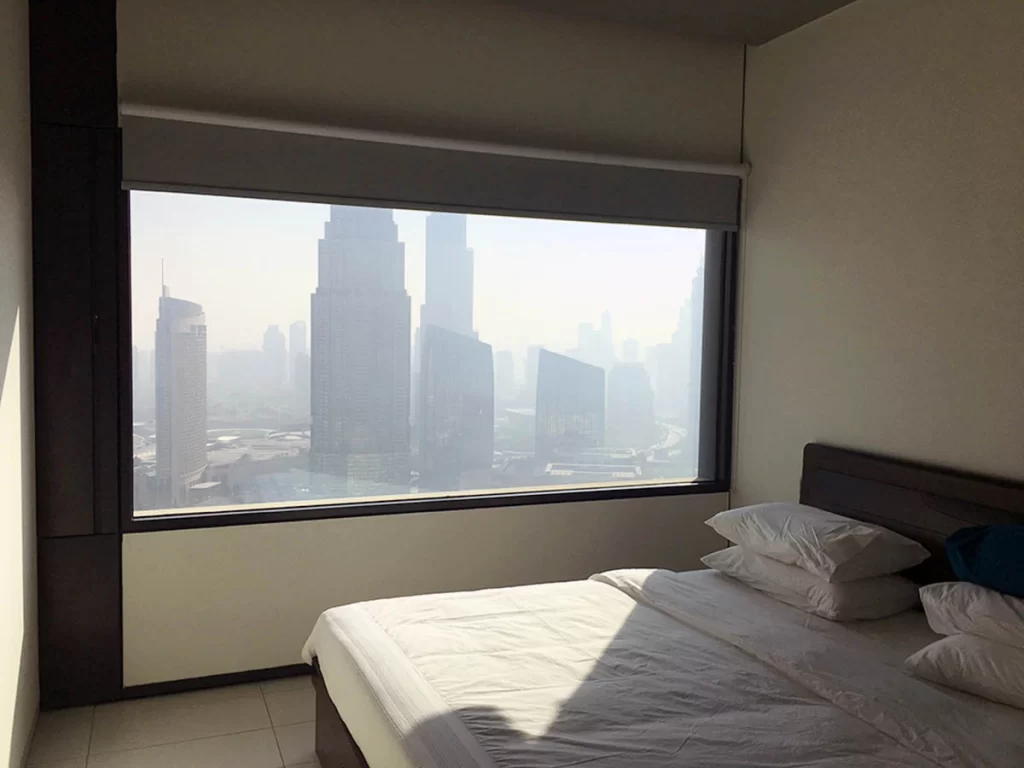
Try out wild camping
Contributed by Lisa from Dazzling Wealth
Wild camping is the greatest gift of all for the real adventurers among us! All you need is some camping gear, a beautiful spot, a nice cup of coffee and you’re good to go!
Wild camping is a way of camping, but of course, in the wild. Instead of staying at a camping site for a while, you’re staying out in nature. Most times you’re only staying for a day or 2, then moving on to the next place. This is great if you’re on a road trip.
In the USA and Canada, wild camping is allowed in most places. In Europe, however, not so much. Only in Scandinavia, there’s the allemannsretten law (loosely translated as ‘the right to roam’). It means that everybody has the right to go out into nature, so wild camping is allowed in Scandinavia.
In some other countries in Europe, wild camping is allowed under strict rules. Check the rules out before traveling there. Also, take note of the basic rules of wild camping.
Wild camping doesn’t cost anything. However, camping gear isn’t cheap. There will be an extra cost the first time you go wild camping. But, camping gear could last as long as a lifetime (when properly taken care of). So you only have to buy it once, to enjoy it over and over again.
In the long run, it’ll save you so much money. And the experience of wild camping is worth everything. Wild camping allows you to experience new places you may not have considered going to.
So on your next trip, consider going wild camping!
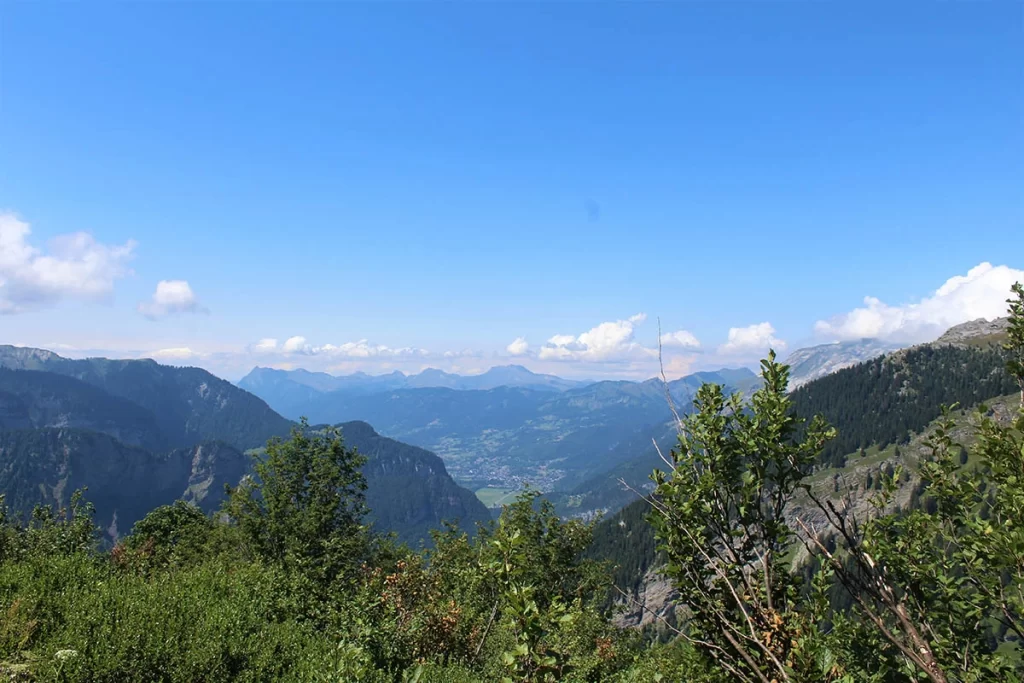
Do laundry by hand
Contributed by Kayla from Writing From Nowhere
No one wants to think about washing their underwear while they’re planning out a trip, but laundry is a humbling constant in our lives that doesn’t stop when you hit the road! You can pay for laundry services or a laundromat, or you can take your laundry into your own hands.
Hand washing laundry has long been a favorite of budget travelers, but the process can be massively improved with a simple travel accessory: the Scrubba Wash Bag ($50). It’s essentially a roll-top stuff sack with a foldable washboard on the inside so you can shake and scrub your clothes clean by hand. It’s more effective than just washing in a sink and more portable.
You can use the Scrubba with any water source, so it’s perfect for hostel hopping and camping alike (when used with biodegradable soap). Pair it with the TSA-friendly Sea To Summit travel laundry strips ($13 for 50 strips) and you’ll be able to get clean undies no matter where you travel without constantly dishing out more cash.
Doing your own laundry is particularly important for those who travel long-term. This is perfect for digital nomads who travel and work for extended periods of time.
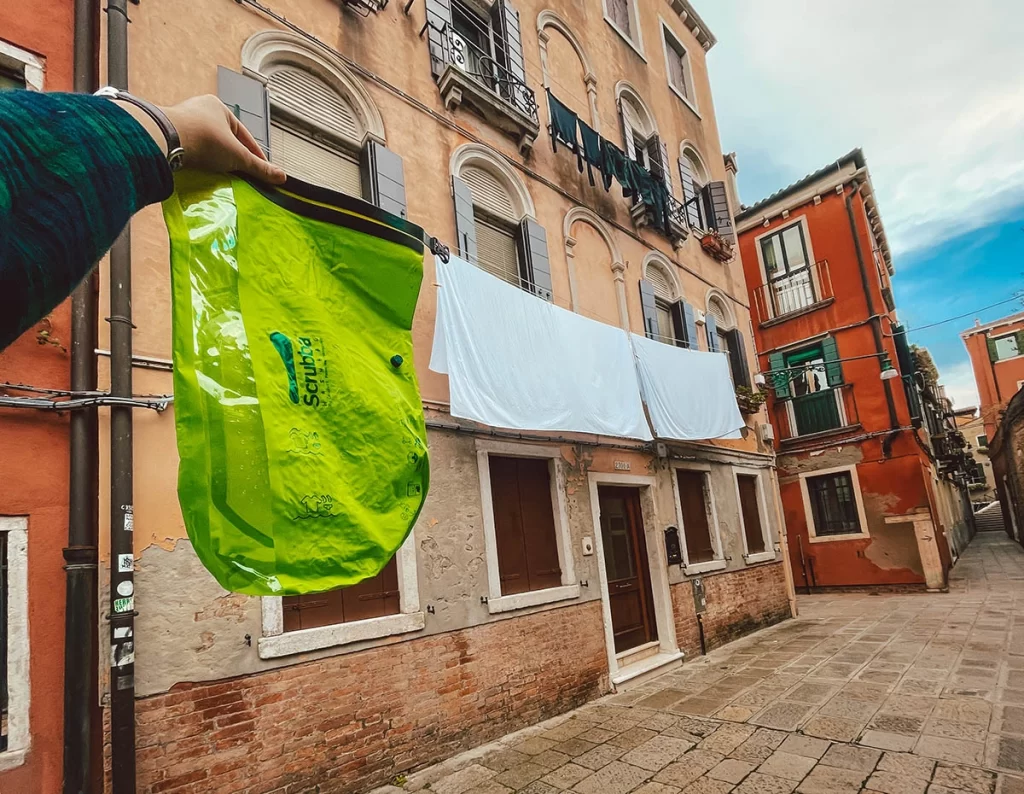
Scrubba Wash Bag
I bought one of these after rubbing my knuckles raw when washing socks on a trip to China. Not only will the wash bag save your knuckles, but your clothes will also end up cleaner too! This is a fantastic way to keep down laundry costs and the number of clothes you take…..
Activities tips
Participating in activities and sightseeing are the main attractions for travel. They can also be the most expensive because these costs add up very quickly.
But traveling on a budget doesn’t mean you should forego the fun stuff just to save a dollar. Some of my favorite experiences in Buenos Aires was utilising free activities. Read through the following tips and see if you can apply any the next time you travel.
Not everyone needs to participate!
Contributed by Lanie from Make More Adventures
When you are used to traveling alone or as a couple, it is easy to spend what could be a small amount of money on an activity, but that price can double or triple when kids are involved!
Taking the kids on adventures is fun, but often they are interested in activities that adults aren’t. As kids grow and get their own unique interests, they don’t always want to do what the other members of the family want to do.
To save money while traveling, not every member of the family needs to participate in every activity. Of course, spend most of the day together, but if there is an admission price and it isn’t too difficult to separate for an hour or two, save the money and only send in the family members who want to be there. Sometimes that means finding something else to do with a kid, but other times that means that an adult gets a break for a bit, which is also important.
A good reason to do this is maybe one child would rather swim at the hotel pool than take a tropical fruit farm tour, or is too young to enjoy a food tour and instead goes out for a special treat. One parent might not be as daring as the kids and it’s better to separate and let everyone enjoy their vacation.
If it is easy enough to separate for a bit, not having each member of the family participate in every activity is a budget saver on family vacations.

Free walking tours
Contributed by Sinead from York With Kids
A useful tip for travelling on a budget is to seek out free walking tours in your chosen destination. Major cities and most popular tourist destinations offer free or tip-based walking tours which are led by a knowledgeable local tour guide or volunteers.
These tours are ideal for learning about the destination, meeting other travellers or as a navigation aid in an unfamiliar location.
Tours usually last around two hours and include the city’s major highlights. Some tours will need to be pre-booked so check in advance of your visit.
Walking tours can be a useful introduction to places you may wish to return to (or avoid) and will be a lot cheaper than a hop-on hop-off bus tour or hiring a guide, particularly if you are travelling in a group or as a family.
There is no obligation to complete the tour so you can leave whenever you or the children in your party get tired or bored. We have completed free walking tours in York, England, Reykjavik, Mostar, Buenos Aires and Washington D.C.
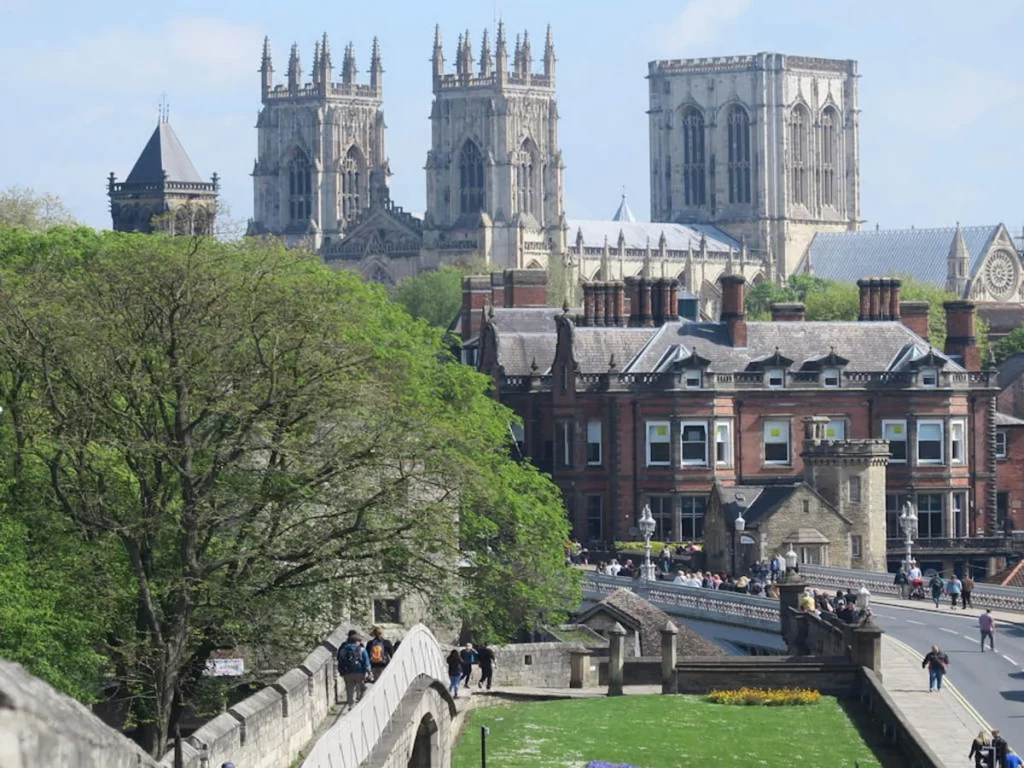
Visit free museums
Contributed by Or from My Path in the World
If you want to get to know the cultural side of a city without breaking the bank, an easy way to do that is by looking for free museums. From famous capitals like Amsterdam and London to off-the-beaten-path destinations, every city is home to at least a few museums you can see without spending a dime.
While some are completely free to enter and enjoy, others offer free admission at certain hours every day or on a specific day of the week. You can easily check those details on the official website of each museum, though plenty of travel websites and blogs have already created these kinds of roundups to make your life easier.
It may come as a surprise, but some of the places you can visit for free are iconic world-class museums, including the Prado Museum in Madrid (offering free admission for two hours every day), the National Gallery in London, and the permanent collection of the Petit Palais – Musée des Beaux-Arts de la Ville de Paris.
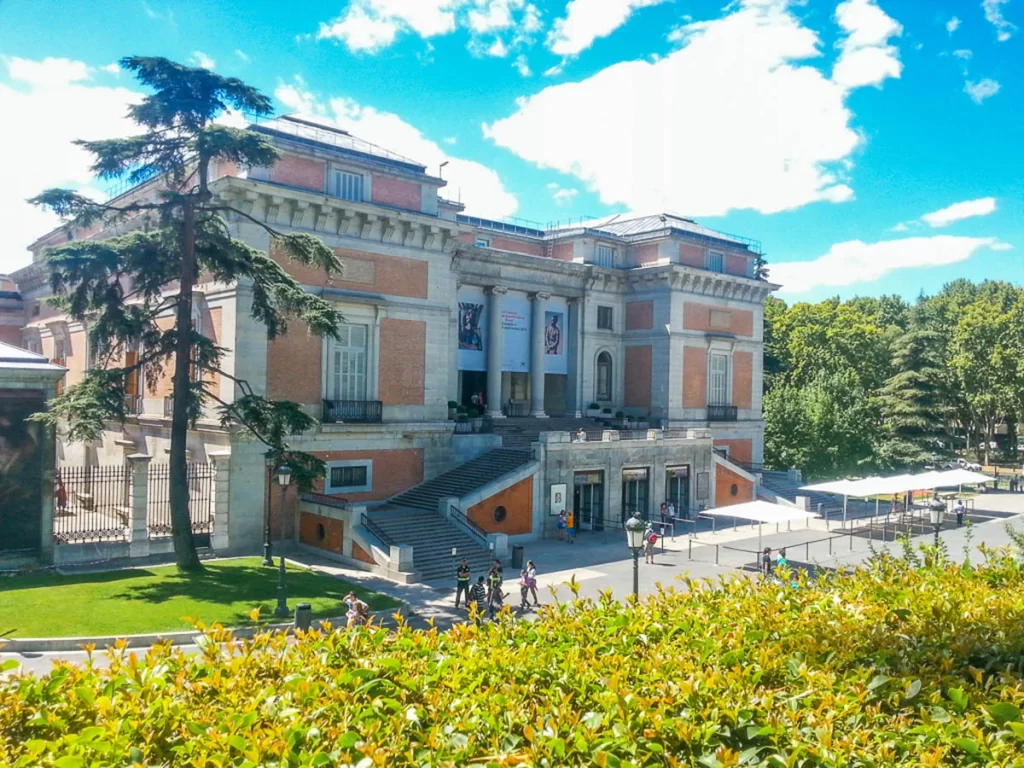
Buy a city pass to save on entrance tickets
Contributed by Jack and Abbie from A Couples Calling
One of the best ways to save money whilst travelling is to look if your destination has a city pass.
Many places throughout Asia, Europe, and North America offer city passes that cover a range of attractions within that city. Not only can you save up to 55% off entrance fees and activities, but you’ll also be able to reserve a space if you need to book in advance.
Depending on the city you’re visiting you can purchase a one to seven-day pass, which will save you a tonne of money in the long run. This is especially helpful if your itinerary is packed with attractions that may otherwise be too expensive for your budget.
For example, the London pass covers over 90 popular attractions including Tower Bridge, London Zoo, the Shard, and Westminster Abbey.
To put this into perspective, if you were to visit all these sites usually it would cost around £102. However, the two-day London pass costs around £93 which is cheaper, and you’ll have access to 80+ other attractions as well.
It also includes a hop-on hop-off bus tour ticket, so you’ll be saving money on transport too!
<— For information and prices on the London Pass, click on the orange button.
Other popular destinations that have a city pass include Bangkok, New York, Paris, San Francisco, and Singapore.
As you can see, plenty of cities offer these passes and they are a fantastic way for travellers to save money and see the main travel sites of the city you’re visiting!
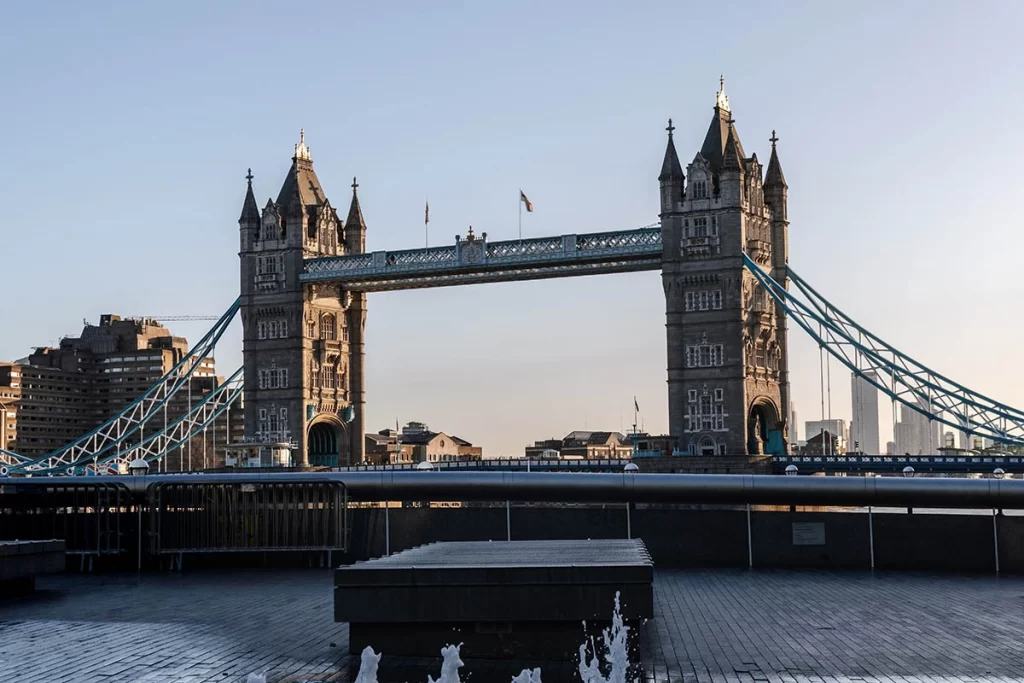
Transport tips
Unfortunately, all the local attractions in a destination aren’t next to each other. It would make traveling easy if they were, though!
Transportation isn’t always the biggest cost to your trip, but it can sure add up. Like the time I traveled to Japan with my family, and while a $3.60 train ticket didn’t feel like much, $3.60 x 5 people x 7 days sure added up to a lot!
If you can save money on transport costs and are still able to get around comfortably to all the sites you want to visit, then that’s a win for the budget-conscious traveler!
Use local transport
Contributed by Daniel and Ilona from Top Travel Sights
An easy way to save money while travelling is by skipping flights and tourist shuttles and using public transportation instead.
When going abroad, using public transport might seem daunting. That’s where tourist shuttles come in. These companies promise to bring you exactly where you want to go, but it usually comes with a hefty price tag.
By doing your research and asking local people, you can usually find out how to use public transport. A bus ticket is much cheaper than a shuttle dedicated to travellers.
If you’re travelling to Costa Rica, for example, and you want to go from Puerto Viejo de Talamanca to Tortuguero (both are fantastic places to visit on the country’s Caribbean coast), a tourist minibus sets you back almost $80. Using local buses costs less than a quarter of that price.
Cheaper alternatives to a short flight are public transport options. While there are some exceptions to this rule (especially in Europe and Asia), if you’re travelling on a budget, you should always do some research.
Take into account that many airlines charge you extra for your luggage, and then compare the price of that flight with a bus or train ticket.
Most of the time, you’ll find public transport much cheaper. This means you’ll have more than a little money left over for fun activities!
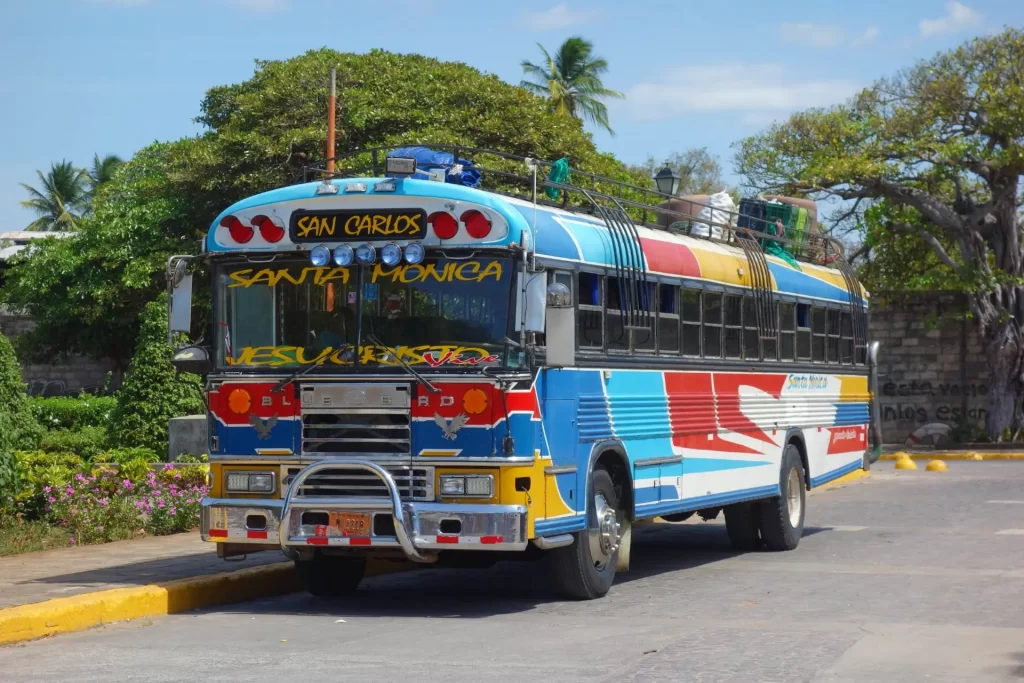
Rent a bicycle
Contributed by Paulina from ukeveryday
There are many amazing destinations such as London, Amsterdam, or Isla Holbox where renting a bike is one of the best ways to travel. Exploring places by bike can not only reduce the cost of travel significantly but also can offer you a much more enjoyable experience.
It is much cheaper to use a bike than to get rental cars or use public transit options. Cycling is also a faster way of sightseeing as you will not have to waste any time waiting for a bus. Avoiding traffic in a busy city and eliminating costs for car parks are just other advantages of using a bike.
Renting a bike will allow you to explore many attractions without spending any extra money every time you will want to visit a new place. If you rent a bike for a whole day, it will cut costs of travel by a lot. It is also a great way to be more environmentally friendly travel.
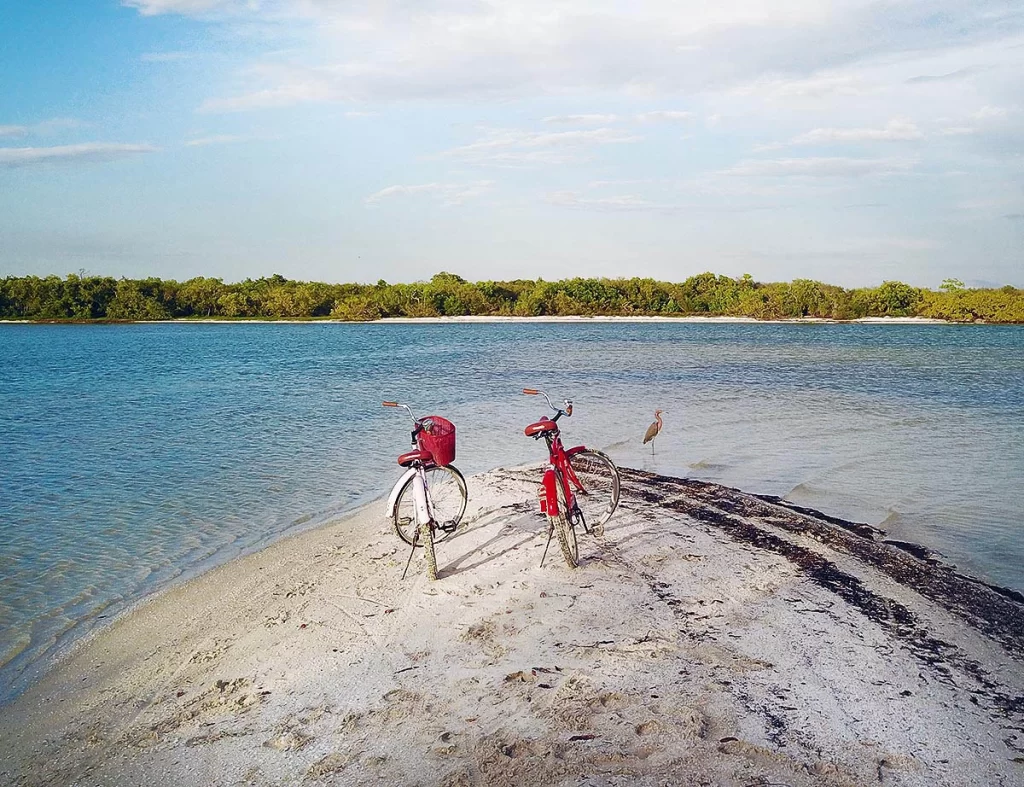
Use rideshare apps
Contributed by Melissa Douglas of Mexico Travel Secrets
Rideshare apps like BlaBlaCar are a great way to save money when you travel. Yes, you can take public transport. But in a lot of places that you travel to, you may find that public transport leaves a lot to be desired and multiple transfers are required to get from A to B.
Traveling via Bla Bla Car often works out even cheaper than taking the bus. Better yet? It is a more social way to travel and you may find that your road trip buddies become new friends for life.
Once you have downloaded the app and created a profile, you just need to enter your pick-up location and drop-off destination. Then, click “find a ride”.
The app will then match you with people who are headed in the same direction as you and will tell you how much you need to pay for the journey. If you are worried about the dangers that come with getting into a stranger’s car, you will be pleased to know that you can review the profiles and ratings of other BlaBlaCar users before you agree to travel with them.
You can opt to only travel with drivers who have been using the app for a certain amount of time, or who have a particular amount of reviews. Always leave reviews after your trips so that you can then give future riders an idea of what to expect.
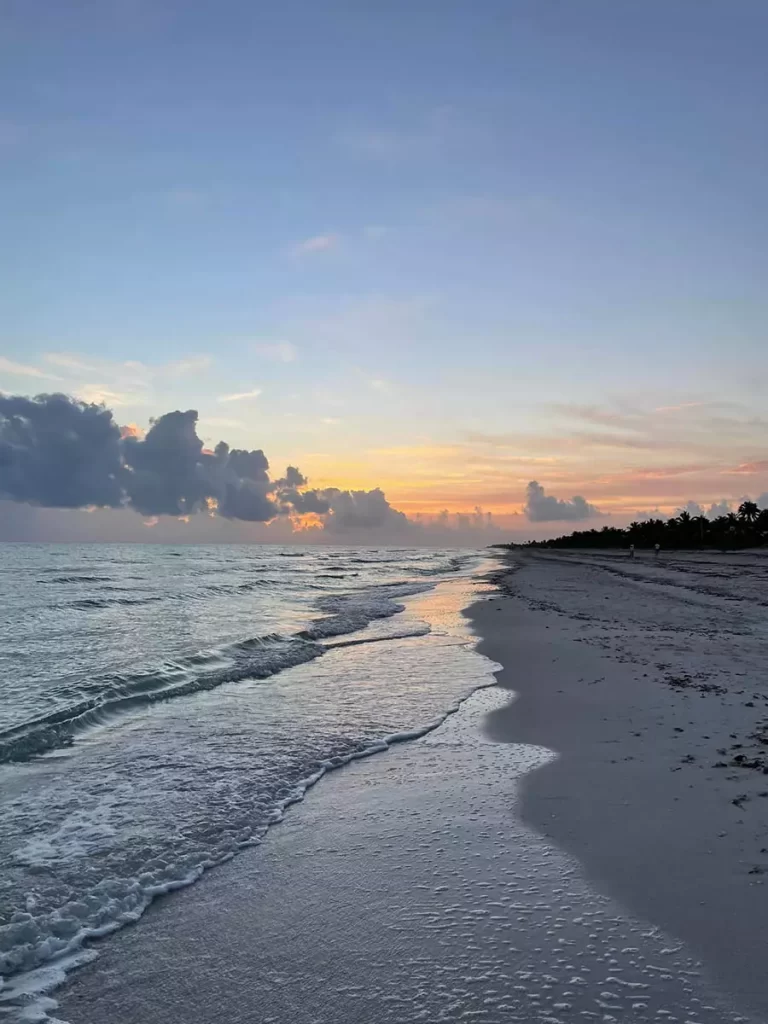
Plan a walking route
This one may seem a bit obvious, but you can save money and time by planning a walking route to visit nearby attractions.
If you’re traveling on a budget and you want to save a little bit of money, then open up a mapping tool such as Google Maps and look for a cluster of tourist attractions that you want to visit. If they are within 1-2km of each other, then it will be much quicker and easier to walk to each one.
Another advantage of walking between attractions is that you get to see some really amazing local streets that you may not have seen otherwise. Walking also helps you to stay fit and healthy if you find yourself eating lots of local foods!
One thing to be mindful of is that you need to wear good, supportive and comfortable shoes. Take a couple of bandaids with you in case you need them. Also, be conscious of your surroundings. Don’t walk in areas where your safety may be compromised.
You may find that by the end of the day you are exhausted and you have sore legs, but you can simply use that as an excuse to go and get a massage!

Consider slow travel
Contributed by Megan from Packing Up The Pieces
One of the best tips for travelling on a budget is simple, slow down. The concept of slow travel is nothing new, but it can seriously help cut big expenses. Slow travel does mean more time on the road, but it helps decrease two of the biggest travel expenses: accommodation and transportation.
One top way to utilize the slow travel method is to opt for long-distance buses over short and often expensive domestic flights. Try to use local buses or vans over buses that are catered for tourists.
Another way to optimize slow travel is to pick a travel destination and choose a long-term rental. Almost always there are big discounts (usually over 40%) for monthly discounts on popular booking sites.
You can do this in places like Peru’s Sacred Valley and save hundreds of dollars on lodging expenses per month. Slow traveling also presents opportunities to obtain free accommodation by volunteering or housesitting. Many volunteering options also include meals, which covers another travelling expense.
Travelling slow means really connecting with a destination so why not pack a tent? Hiking and camping provide an unparalleled way to travel and is truly the best way to get off the beaten path.
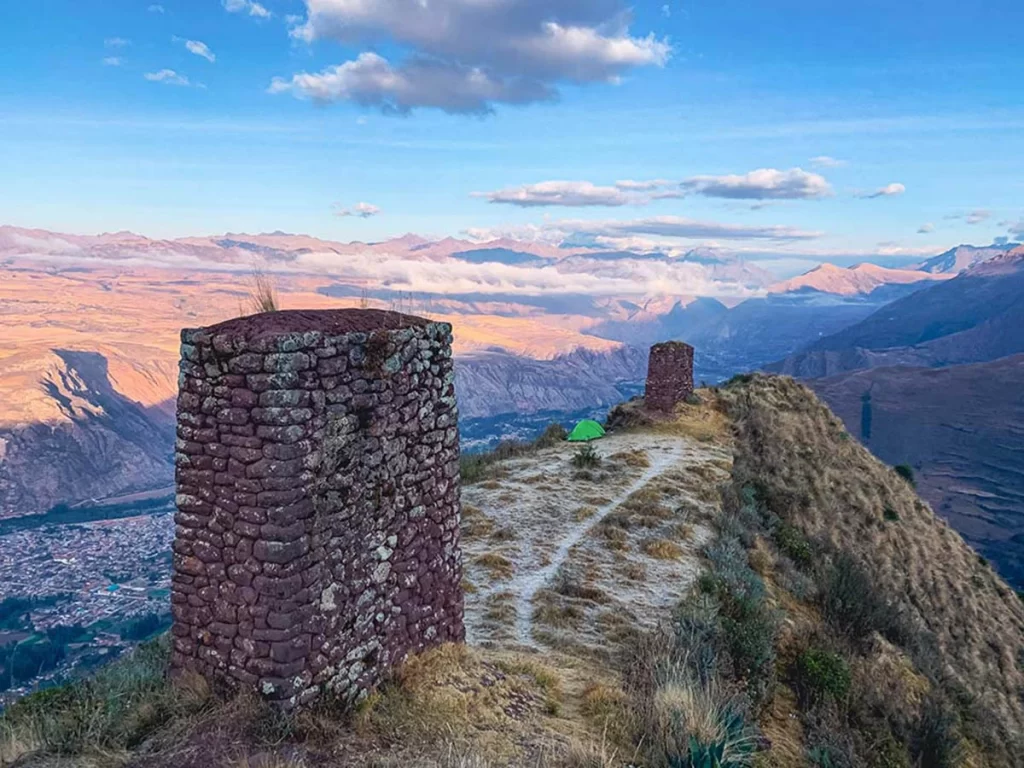
Use overnight transport
Many countries offer overnight transport solutions, such as buses and trains. These can be used to not only take you from one location to the next, but you can also save on a night’s accommodation.
Booking an overnight bus or train may be more expensive than the normal bus or train fare, but it will be a fraction of the cost of accommodation.
Travelling at night is also a great way to move between locations without wasting the day traveling. If you’re on a limited time frame, this may be an excellent option.
You may even find yourself in a cool bus like this one in Vietnam. We weren’t traveling at night, but it was still a fun and comfortable experience.
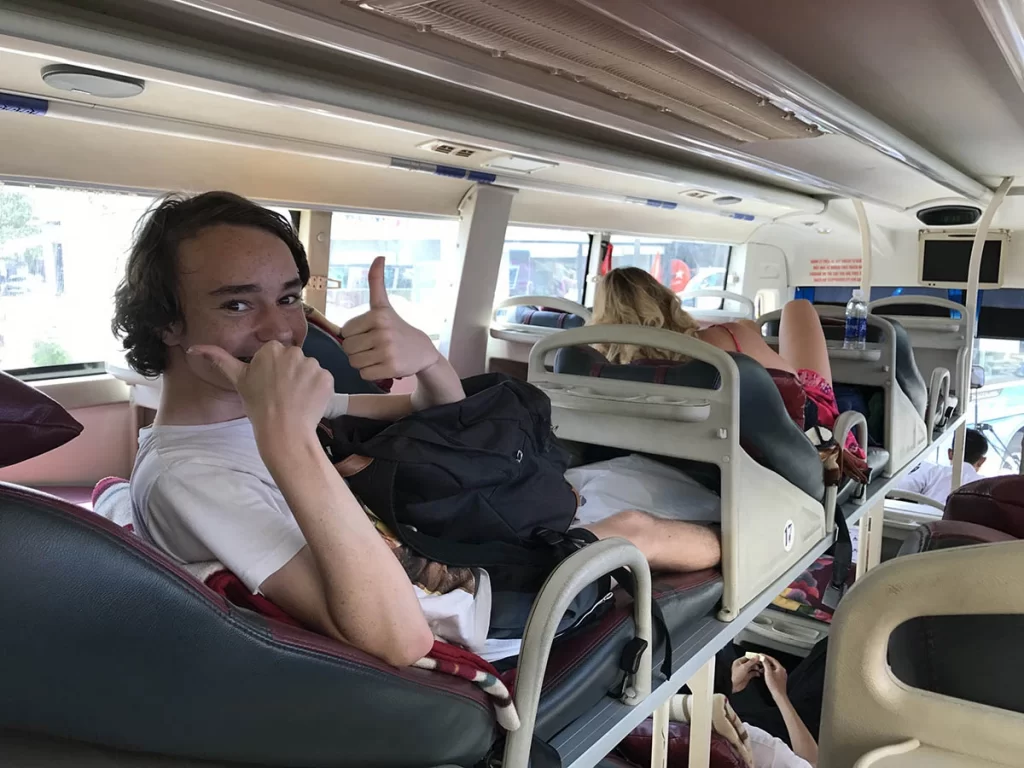
Food tips
50% of the reason I travel is the food. The other 50% is adventure and immersion in the local culture. But like all other parts of a trip, food costs can quickly add up.
If you want to know how to travel well on a budget and still experience all the food there is to offer, the following tips might help.
Prepare your own food
Contributed by Martina from Places of Juma
One place where you can definitely save a lot of money when traveling is by not eating out! Especially in expensive destinations, as prices in restaurants and cafés can add up to vast sums.
So, it is highly recommended to avoid eating out and prepare your own food and drinks!
You will save up to 80% of your food expenses, which is quite a lot when travelling on a budget. Of course, now and then you can go out to try some local restaurants and specialties, but beyond that, you should prepare your own food.
The cheapest way is to book an apartment (instead of a hotel) and prepare your own delicious meals. Here you save twice, and your wallet will surely say thank you! In many countries, apartments with a kitchen are much cheaper than hotel rooms and cooking your own meals is also a fantastic deal – especially in more expensive travel countries.
So head to the grocery store or local markets and pick up some ingredients to prepare your favourite meal!
Tip: Super nice and cheap apartments with kitchens can be found on booking.com and of course on Airbnb.com.
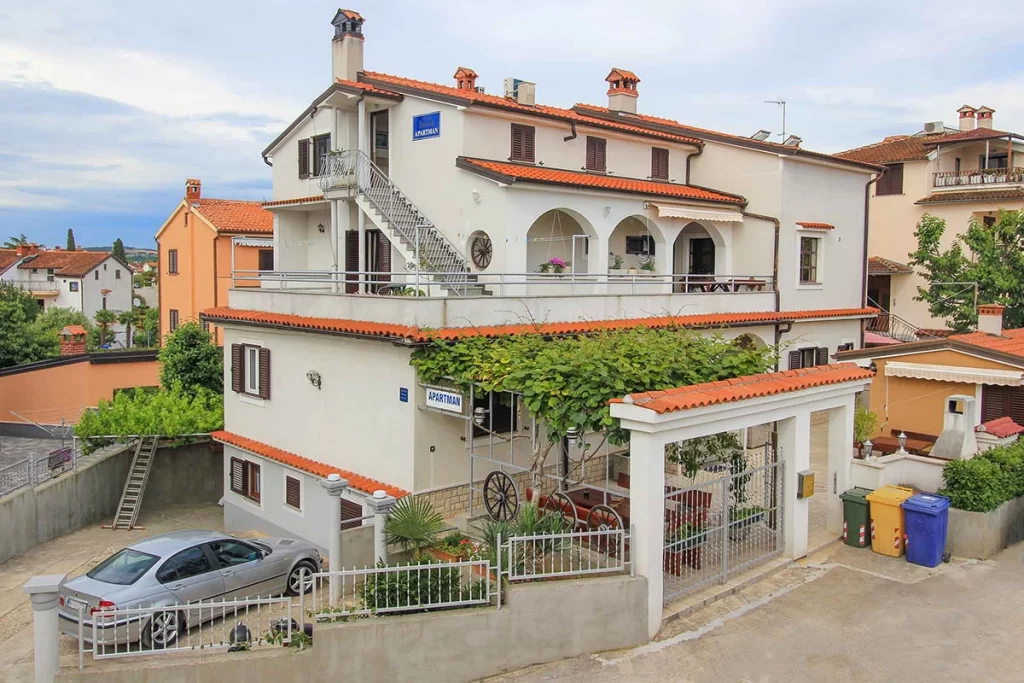
Eat at restaurants away from the tourist spots
Contributed by Shireen from The Happy Days Travels
When travelling, you don’t always want to cook for yourself or take your own lunch on day trips because sometimes you want to sample the delicious cuisines of the world. But this doesn’t have to break the bank!
One of the best tips for budget travel is to eat at places away from the hot tourist spots and do your research about local food and restaurants to find the cheapest eats.
A good rule of thumb is if you can see the tourist attraction you are eating in an expensive place. For example, if you have a view of the Colosseum in Rome, you are going to pay well over the odds for anything you eat or drink in that vicinity.
When you’re out exploring the place, take note of some of the prices of food and go back later to eat. It’s worth the extra steps to save the extra cash. Also, when you’ve seen a hotspot, walk at least 3 streets away and start exploring places to eat from there.
Not only is finding a place away from the tourist spots a great tip for travelling on a budget but it’s also the best way to try the local food because the restaurants and cafes that are near the attractions will be mass-produced, low-quality and bang-average food! You might even find some amazing street food for cheap!
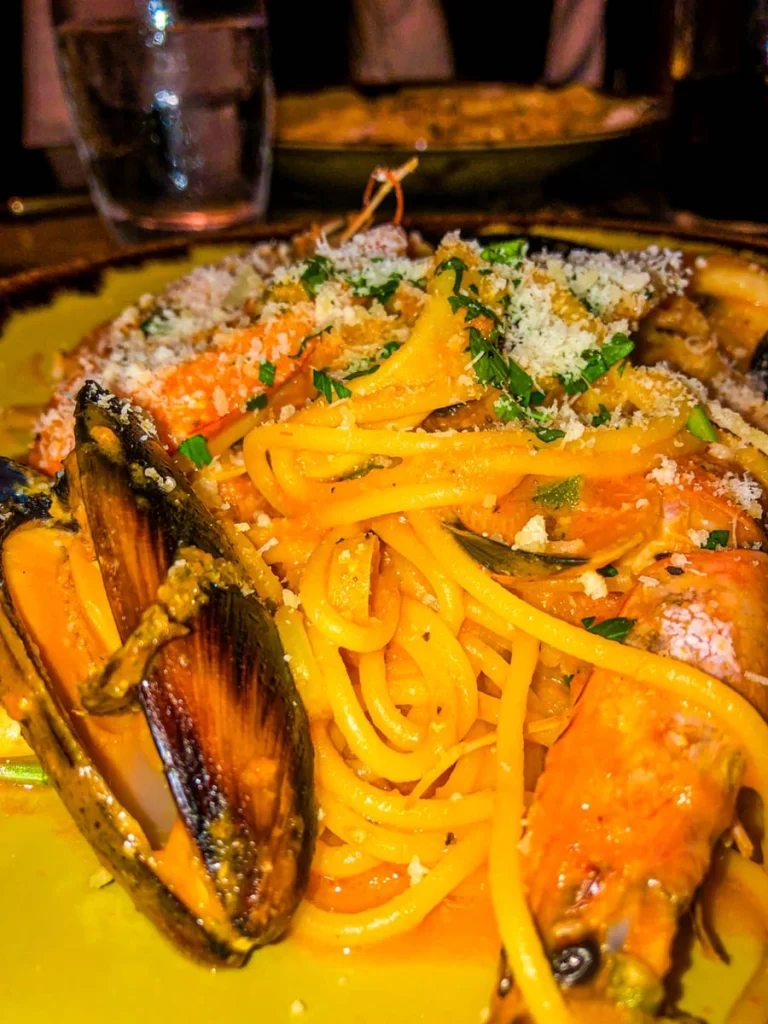
Don’t buy bottled water
Not all countries have safe drinking water available from the tap. For international travel, it’s a good idea to check this before you leave for your destination.
One way to minimise your harm to the environment and save money is to not buy bottled water. This protects the environment from harmful single-use plastics.
There are two things that you will need. The first is a reusable water bottle, which you probably have 10 of already in your cupboard. And the second thing is a water filtration system.
There are different types of water filtration systems. You can get tablets or use UV light, but the best one is using something like the Sawyer Water Filter.
A water filter like the Sawyer will not only remove bacteria and nasties from the water, it will also remove solid material. Tablets and UV lights aren’t able to do this. By removing solids, your water will be much more palatable!
A water filter is also perfect for when you’re hiking in national parks as you can take the water directly from a stream, filter it, and it’s good to go.
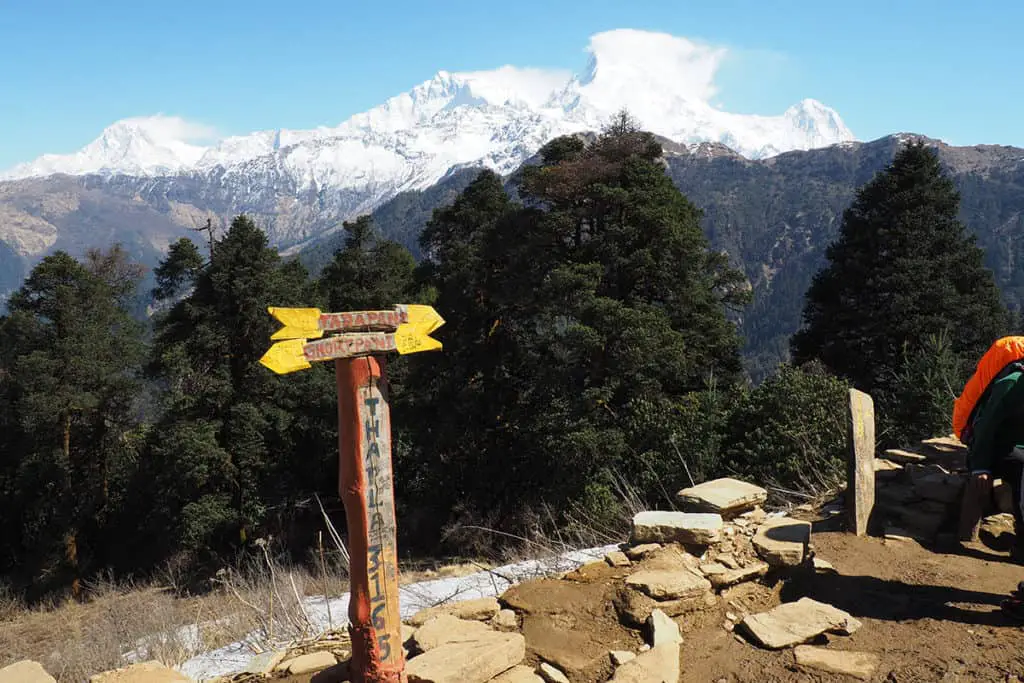
If you want to look up more information and the benefits of a water filter, click on the link below.
Sawyer Water Filter
You need one of these filters in your travel kit! The Sawyer filter removes harmful bacteria and other nasties from water. It only takes a few minutes before you’re on your way to your next adventure with a bottle full of deliciously clean water.
Tour tips
Some people love traveling on tours, and that’s perfectly ok! Tours are great in that you pay your money and turn up. Everything is taken care of and you don’t have to worry about a thing!
I’ve been on a couple myself. However, you are usually paying a premium for the tour. If you are traveling on a budget, try to find alternatives to bulk tours.
Hire local guides and use local travel agencies
Contributed by Elaine Villatoro from Live More, Travel More
A great way to save money while traveling abroad is by hiring local tour guides and travel agencies instead of purchasing a travel package with a big agency from your home country. What happens is that these big agencies will be working as intermediates and might add extra fees to each activity you plan to do and may charge an administration fee for booking and processing all those payments for you.
Another point, which is also relevant, is that when you hire a local agency or tour guide from the destination you are heading to you end up being a more sustainable traveler. When you pay the local business directly, they can get a higher profit compared to when they must pay a commission to the agency that hooked them up with you. You win because you pay less, they win because your attitude will empower their business and their employees will be better paid.
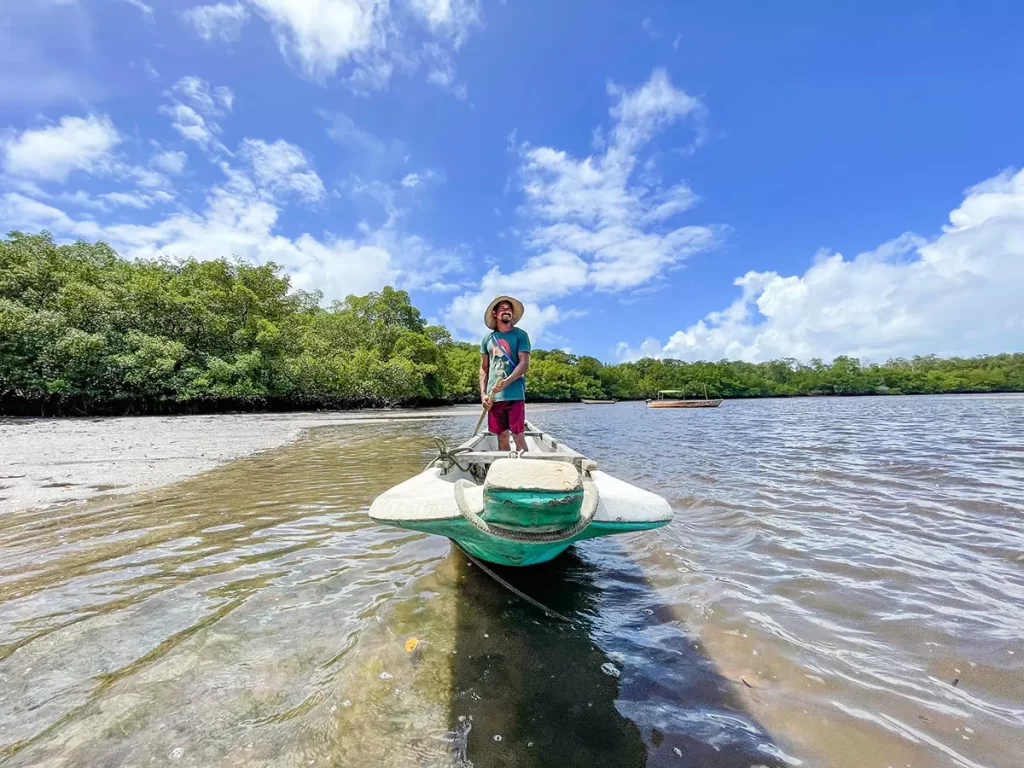
Avoid tours and travel independently
Contributed by Samantha from Intentional Detours
One of the best ways to travel on a budget is to travel independently! Independent travel is almost ALWAYS cheaper than joining a tour. Tour companies charge exorbitant rates, which are often more than 10x the daily price of figuring things out in the country on your own.
From the many offbeat places to visit in Hunza Valley to the cobblestone streets of Europe, know that you will absolutely be saving a ton of money by planning your own itinerary. While it might seem stressful at first, there are so many online resources these days that virtually anyone can plan their own adventure, even without much experience!
Doing things such as taking public transport or buying a vehicle and then selling it at the end of your trip can also cut your daily budget. In many countries, long-distance buses or trains cost less than $5 whereas private cars can cost upwards of $50, even in budget travel destinations.
Of course, it’s easier to get someone to plan an entire trip for you. But in a place that could cost as little as $10-$20 a day, why put tons of money into the hands of a travel agent or commercial foreign operators?
If you’d still like some guidance, always hire independent local guides or drivers. They will charge less, and this will ensure that your money is DIRECTLY going to the destination’s economy instead of already rich companies that often pay locals terrible rates.

Travel in a group
Contributed by Alina from We Made This Life
Travelling as a group can be a great way to save money. Not only do you get to enjoy the company of your friends, but also you get to split the cost of accommodation, food and transportation. You can get some great deals on larger properties and as you are splitting the cost with the rest of the group you will often find somewhere more luxurious than if you were staying on your own.
Travelling as a group also saves you money on getting around – the more ways you can split a taxi fare the better for you, or if you hire a car you can split the fee and also the fuel costs.
You can also get group discounts on trips and excursions and these savings all add up. Not only is group travel more economical than travelling solo, it can be a lot of fun and you can also make new friends while travelling if you are travelling as a group.
Travelling as a group also works really well if you have children. Travelling with children can be a challenge. Not only do you have to manage any needs your child has, but you have to handle all the extra luggage and children are expensive!
If travelling as a family with one or more children, you may want to consider travelling as a group. Travel with another family with children and you have extra sets of hands, and the children will entertain each other. You can also save money on childcare in the evenings by sharing babysitting duties.
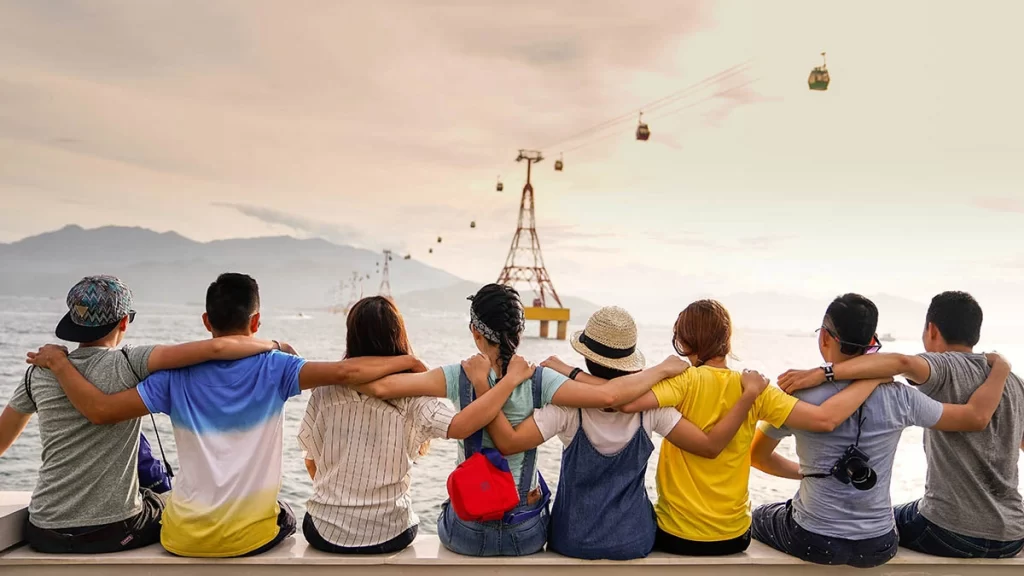
Final Thoughts
The whole reason I have this travel blog is to share low-cost travel information so you feel inspired to book your next trip. I love traveling and finding ways to do it cheaply makes it more attainable.
I hope these budget travel tips have shown you ways that you can save money so that you can travel further and longer the next time you go on an adventure.
By following these 30 tips, you can save money while traveling and stick to your budget. Whether you’re taking a trip abroad or staying close to home, these tips will help you get the most out of your travel experience without breaking the bank.
I’d love to hear what are your best travel tips! Leave a comment below to share your tips on how to travel on a tight budget.
Other articles with travel tips
Tips for staying safe while in Buenos Aires
Tips for visiting Uluru and Kata Tjuta
How to get to Antarctica
Pin this article for later
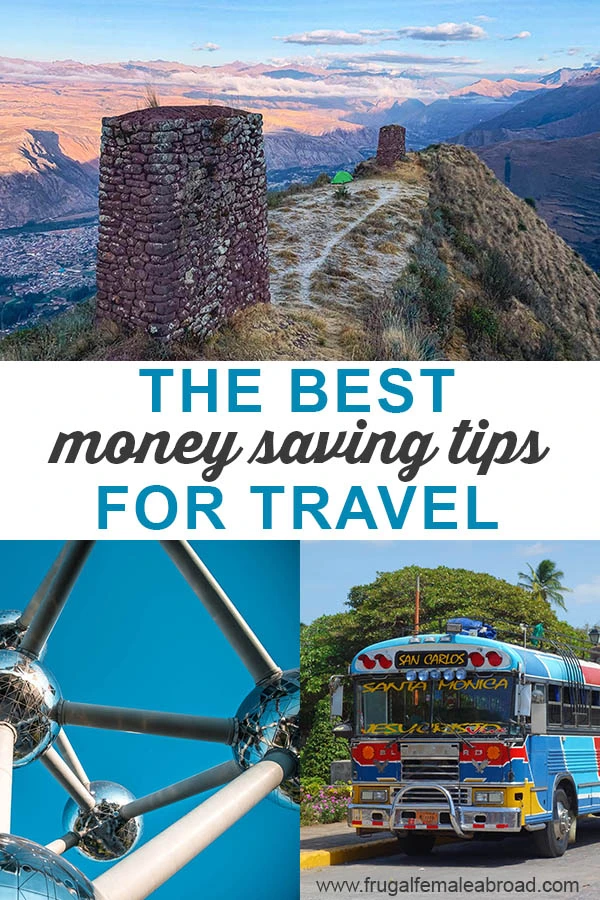

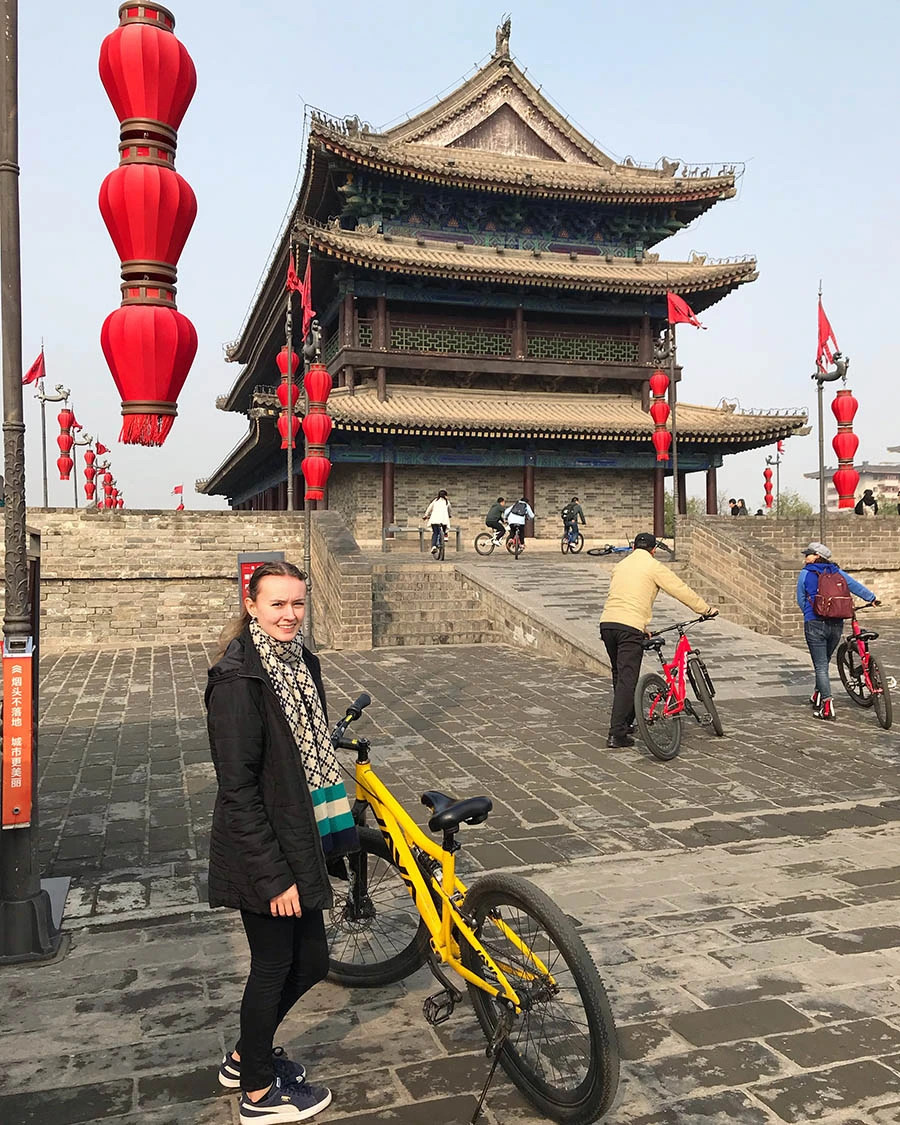



2 responses to “The 35 best money-saving tips for traveling on a budget”
Amazing tips! I am planning a trip with my family and so this post is super helpful for me in saving some money. Keep sharing such helpful tips with the readers.
Thank you for sharing your travel experiences and insights on your blog. Your posts have been both informative and inspiring, making it easier to plan my own adventures. Keep up the great work!